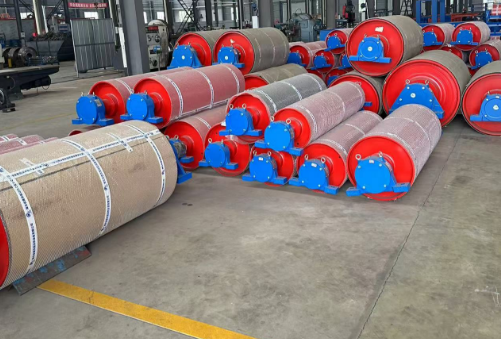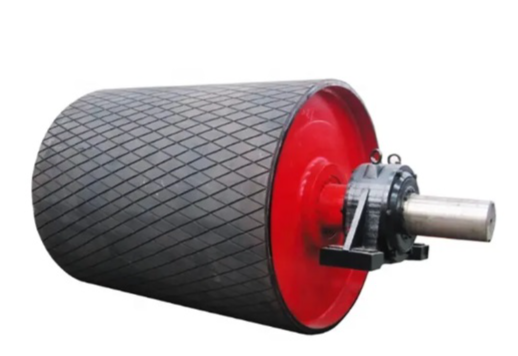
In scenarios such as cargo handling at global ports, resource transportation in mines, and production circulation in steel plants, heavy-duty conveyor rollers are indispensable core components of material handling systems. Acting like the "power joints" of the system, they support high-weight and high-frequency material transportation tasks, and their performance directly affects the efficiency and stability of the entire transportation chain.

From the perspective of structural design, a heavy-duty conveyor roller is not a simple cylindrical component but a precision assembly consisting of key parts such as the roller body, bearing housing, and shaft core. As the core part in direct contact with materials, the roller body must possess strong load-bearing and wear-resistant capabilities. Currently, mainstream heavy-duty conveyor rollers are quite particular about the material selection for the roller body. Most adopt high-strength alloy materials and undergo surface nano-ceramic coating treatment. This combination of processes can increase the load-bearing capacity of the roller by more than 40% compared with traditional products, significantly reduce the wear rate by 60%, and extend the service life to 80,000 hours, greatly reducing the frequency and cost of equipment replacement.
In terms of functional optimization, modern heavy-duty conveyor rollers have integrated more intelligent elements. To avoid the stagnation of the transportation chain caused by sudden equipment failures, many products have optimized the bearing structure and built-in temperature sensors and intelligent early warning modules. These components can real-time capture key data such as temperature and speed during the operation of the roller. Once an abnormality is detected, they can immediately send out an early warning signal, with an accuracy rate of over 98% for fault early warning. This buys valuable time for subsequent maintenance and overhaul, effectively avoiding losses caused by unexpected shutdowns.

From the perspective of applicable scenarios and actual performance, heavy-duty conveyor rollers have strong adaptability and can cope with a variety of harsh working conditions. In a high-intensity operating environment with a single-axis load of 12 tons, they can achieve stable operation for 180 consecutive days, and the speed and transportation accuracy always remain within the ideal range. At the same time, they are also convenient for installation and maintenance. Compared with traditional similar products, the installation and maintenance time of modern heavy-duty conveyor rollers can be shortened to within 4 hours, significantly reducing labor and time costs.
Whether in port terminals for bulk commodity transportation or in industrial plants with high-load production, heavy-duty conveyor rollers, with their excellent performance, durability, and intelligent advantages, have become key equipment for improving material transportation efficiency and reducing operating costs, providing a solid guarantee for the efficient operation of global logistics and industrial production.